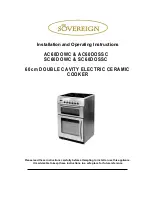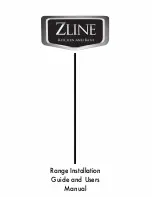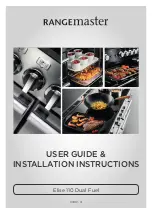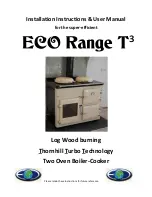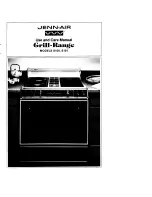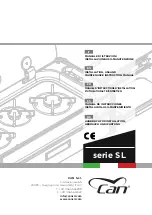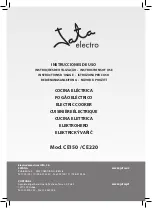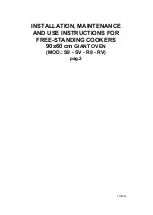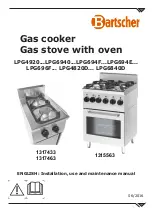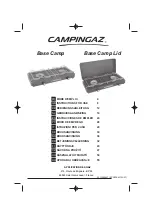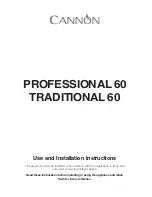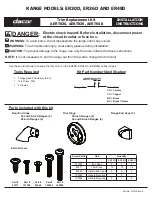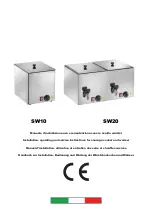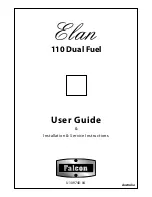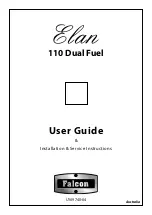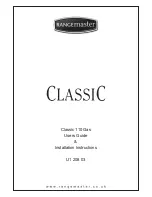
4
4
5. Operating the Appliance
The appliance is designed for use with cooking vessels of not less than 180mm in diameter and not greater than 250mm in
diameter.
After lighting, do not move the gas cylinder and the appliance around, as liquefied gas may enter the appliance from the gas
cylinder, causing it to flare (large yellow flames).
Always operate the appliance on a firm level surface with the gas cylinder in an upright position.
Lighting the Appliance using the piezo:
•
Turn the control knob clockwise to the ‘OFF’ position.
•
Turn the gas supply ‘ON’ at the cylinder.
•
Push down the control knob and keep pressing whilst turning anti-clockwise to the ‘Ignition’ position. This should light the
burner. Repeat this several times until the burner lights. If not, wait at least 3 minutes and repeat this process.
•
When the burner is lit, keep the control knob pressed for a few seconds, then release it.
•
If the burner does not stay alight, repeat steps 3 and 4. Adjust the heat by turning the knob to the ‘High/Low’ position.
•
To turn the stove ‘OFF’, turn the cylinder valve to the ‘OFF’ position and then turn the control knob on the appliance
clockwise to the ‘OFF’ position.
•
Always close the cylinder valve after usuage. This will prolong the life of the regulator and prevent any gas leakages if the
appliance is not in use.
Warning:
If the burner fails to ignite within 10 seconds, turn the control knob off (clockwise). Wait three minutes before attempting to
re-light with ignition sequence.
Lighting the Appliance with a match:
•
To light the appliance, light a match or barbecue lighter, turn on the appliance valve after connecting to and opening the
cylinder valve, by turning the control knob (E) in an anti-clockwise direction. Light the appliance burners.
•
Use the control knob to adjust the flame intensity to the desired level by turning the knob clockwise to decrease the flame
and anti clockwise to increase it.
•
Always light the match or the lighter first before opening the gas valve on the appliance.
6. General Maintenance
This appliance does not require scheduled maintenance.
• It is dangerous to use an appliance with a cracked or perished seal and / or hose. Inspect both seals and hose regularly and replace if
they are not in order, before using the appliance.
• If the appliance was in use, it will be hot. Allow to cool sufficiently before attempting any maintenance.
• The Stoves are fitted with jets to regulate the correct amount of gas.
• Should the hole in the Jet become blocked this may result in a small flame or no flame at all.
• Do not attempt to clean the jet with a pin or other such device as this may damage the orifice, which could make the appliance
unsafe.
Replacing a blocked jet:
• Ensure that the cylinder valve is closed, then disconnect the appliance from the gas cylinder.
• Remove the Potstand/cooking surfaces from the stove body.
• Turning the appliance upside down, unscrew the screws holding the bracket of the burner to the body.
• From the top now, you can safely remove the burners from the appliance.
• Unscrew the blocked jet from the valve with a suitable spanner and replace it with a new jet.
• Do not over tighten as this may damage the Jet. To re-assemble, reverse the above procedure.
• Do not use pliers on the jet as this may damage the jet making it unusable or impossible to remove.
4. Fitting and Changing the Gas Cylinder
• Before connecting the appliance to a gas cylinder, ensure that the rubber seal on the Regulator is in position and in good condition.
• Carry out this check each time you fit the appliance to a gas cylinder.
• Blow out any dust from the cylinder opening to prevent possible blockage of the jet.
• Ensure that the appliance valves are in the off position by turning the knobs fully clockwise to their stop.
• Ensure that the gas cylinder is fitted or changed in a well-ventilated location, preferably outdoors, away from any source of
ignition, such as naked flames and away from other people.
• Make sure that the gas cylinder is kept upright at all times, connect to the cylinder by screwing on hand tight until fully
engaged.
• Ensure that a complete gas seal has been made (check for the smell of gas around the connection joint). If there is a leak on
your appliance (smell of gas), take it outside immediately into a well-ventilated flame free location where the leak may be detected
and stopped. To check for leaks on your appliance, do it outside using warm soapy water only, which is applied to the joints and
connections of the appliance. A formation of bubbles will indicate the gas leak. Do not check for leaks with a naked flame.
• If you cannot rectify the gas leak do not use the appliance, contact your local CADAC stockist for assistance.
• CADAC gas cylinder valves must only be repaired by an authorised CADAC service centre or dealer.
• When changing a gas cylinder firstly close the appliance control knobs and then the cylinder valve, making sure the flame is
extinguished, unscrew the regulator. Re-fit the regulator to a full cylinder following the same precautions as described above.
GB








